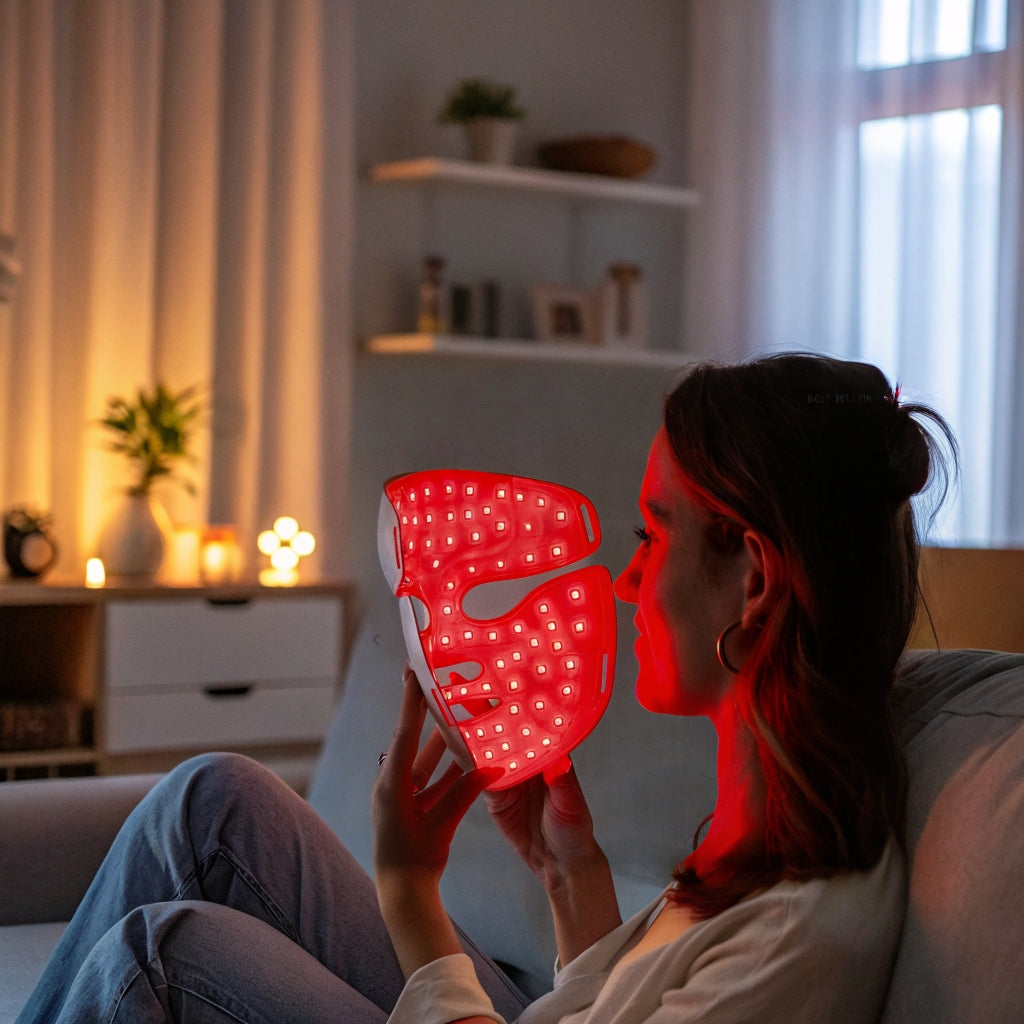
Skin Health and Hair Growth: A Promising Solution
Red light therapy (RLT), also known as low-level light therapy (LLLT) or photobiomodulation, has gained popularity as a non-invasive treatment for skin conditions and hair loss. By using low-wavelength red light (typically 620–670 nm), RLT aims to stimulate cellular processes, promoting healing and rejuvenation. This blog post explores the science behind RLT, its benefits for skin health and hair growth, and what the latest research says.
How Does Red Light Therapy Work?
RLT works by penetrating the skin to enhance mitochondrial function, boosting the production of adenosine triphosphate (ATP), the energy source for cells. This process supports tissue repair, increases collagen production, and reduces inflammation. For hair growth, RLT stimulates hair follicles, improving blood flow and extending the anagen (growth) phase of the hair cycle. These mechanisms make RLT a versatile tool for addressing various dermatological concerns.
Red Light Therapy for Skin Conditions
Research highlights RLT’s potential to treat a range of skin issues, including wrinkles, acne, scars, and sun-damaged skin. Here’s a closer look at the evidence:
Wrinkles and Fine Lines
A 2014 randomised controlled trial (RCT) studied 136 volunteers, with 113 receiving RLT or electromagnetic light therapy (ELT) twice weekly for 30 sessions. The results showed significant improvements in skin complexion, texture, and collagen density, with 69% of RLT participants experiencing reduced wrinkles compared to controls (p<0.001) (Wunsch and Matuschka, 2014). This suggests RLT can smooth skin and combat signs of aging by stimulating collagen production.
Acne
RLT is often combined with blue light to treat acne by reducing inflammation and sebum production. Studies support its effectiveness in calming acne-prone skin (Calderhead, 2007). The therapy targets inflammation and may help prevent future breakouts, making it a gentle alternative to harsher treatments.
Scars and Sun Damage
RLT may improve the appearance of scars, stretch marks, and sun-damaged skin (Avci et al., 2013). While more research is needed, preliminary studies suggest it promotes tissue repair, helping to fade scars and even out skin tone.
Red Light Therapy for Hair Growth
For those struggling with hair loss, particularly androgenetic alopecia (male or female pattern baldness), RLT offers a promising solution. A 2013 RCT provides compelling evidence:
- Study Design: 44 men with androgenetic alopecia used a device emitting 655 nm red light (21 lasers, 30 LEDs) or a placebo device every other day for 16 weeks.
- Results: The RLT group saw a 67.2% increase in hair counts compared to 32.3% in the placebo group (p=0.003), with no adverse effects reported (Lanzafame et al., 2013).
- Takeaway: RLT significantly boosts hair density and thickness, making it a viable option for hair regrowth.
The American Academy of Dermatology confirms that FDA-cleared devices, such as red-light combs, caps, and helmets, stimulate hair follicles, reducing hair loss and promoting growth (American Academy of Dermatology, n.d.). However, results vary, and RLT is not a cure for advanced hair loss.
Safety and Side Effects
RLT is generally safe, with minimal risks. The studies cited reported no significant adverse events, but high-intensity red light can cause redness, swelling, or blistering (Brown University Health Services, n.d.). Eye damage is also a concern, so protective goggles are recommended during sessions. Individuals with a history of skin or eye cancers should consult a doctor before starting RLT.
Practical Tips for Using Red Light Therapy
RLT can be accessed in dermatologist offices, spas, or at home with devices such as masks, desk lamps and full body machines. Here are some tips for getting started:
- Choose the Right Device: Look for devices with proven wavelengths (620–670 nm) for optimal results.
- Be Consistent: Studies suggest 3–6 months of regular use for noticeable improvements (Wimpole Clinic, 2023).
- Consult a Professional: A dermatologist can tailor a treatment plan to your needs, ensuring safety and efficacy.
Conclusion
Red light therapy is a scientifically backed option for improving skin health and promoting hair growth. With evidence supporting its use for wrinkles, acne, scars, and androgenetic alopecia, RLT offers a non-invasive, low-risk approach to dermatological care. Whether you’re exploring at-home devices or professional treatments, consult a dermatologist to maximise results. As research continues, RLT’s role in skincare and hair restoration is likely to grow, making it an exciting frontier in wellness.
References
American Academy of Dermatology (n.d.) Is red light therapy right for your skin? Available at: https://www.aad.org/public/cosmetic/safety/red-light-therapy (Accessed: 20 June 2025).
Avci, P., Gupta, A., Sadasivam, M., Vecchio, D., Pam, Z., Pam, N. and Hamblin, M.R. (2013) 'Low-level laser (light) therapy (LLLT) in skin: stimulating, healing, restoring', Seminars in Cutaneous Medicine and Surgery, 32(1), pp. 41–52.
Brown University Health Services (n.d.) Red light therapy benefits: safety and things to know. Available at: https://www.brownhealth.org/be-well/red-light-therapy-benefits-safety-and-things-know (Accessed: 20 June 2025).
Calderhead, R.G. (2007) 'The photobiological basics behind light-emitting diode (LED) phototherapy', Laser Therapy, 16(2), pp. 97–108.
Cleveland Clinic (2022) Red light therapy: benefits, side effects & uses. Available at: https://my.clevelandclinic.org/health/articles/22114-red-light-therapy (Accessed: 20 June 2025).
Harvard Health Publishing (2019) LED lights: are they a cure for your skin woes? Available at: https://www.health.harvard.edu/diseases-and-conditions/led-lights-are-they-a-cure-for-your-skin-woes (Accessed: 20 June 2025).
Lanzafame, R.J., Blanche, R.R., Bodian, A.B., Chiacchierini, R.P., Fernandez-Obregon, A. and Kazmirek, E.R. (2013) 'The growth of human scalp hair mediated by visible red light laser and LED sources in males', Lasers in Surgery and Medicine, 45(8), pp. 487–495. doi:10.1002/lsm.22173.
WebMD (2023) Red light therapy: effectiveness, treatment, and risks. Available at: https://www.webmd.com/skin-problems-and-treatments/red-light-therapy (Accessed: 20 June 2025).
Wimpole Clinic (2023) Red light therapy for hair growth: results, benefits, safety. Available at: https://wimpoleclinic.com/blog/red-light-therapy-for-hair-growth-everything-you-need-to-know (Accessed: 20 June 2025).
Wunsch, A. and Matuschka, K. (2014) 'A controlled trial to determine the efficacy of red and near-infrared light treatment in patient satisfaction, reduction of fine lines, wrinkles, skin roughness, and intradermal collagen density increase', Photomedicine and Laser Surgery, 32(2), pp. 93–100. doi:10.1089/pho.2013.3616.